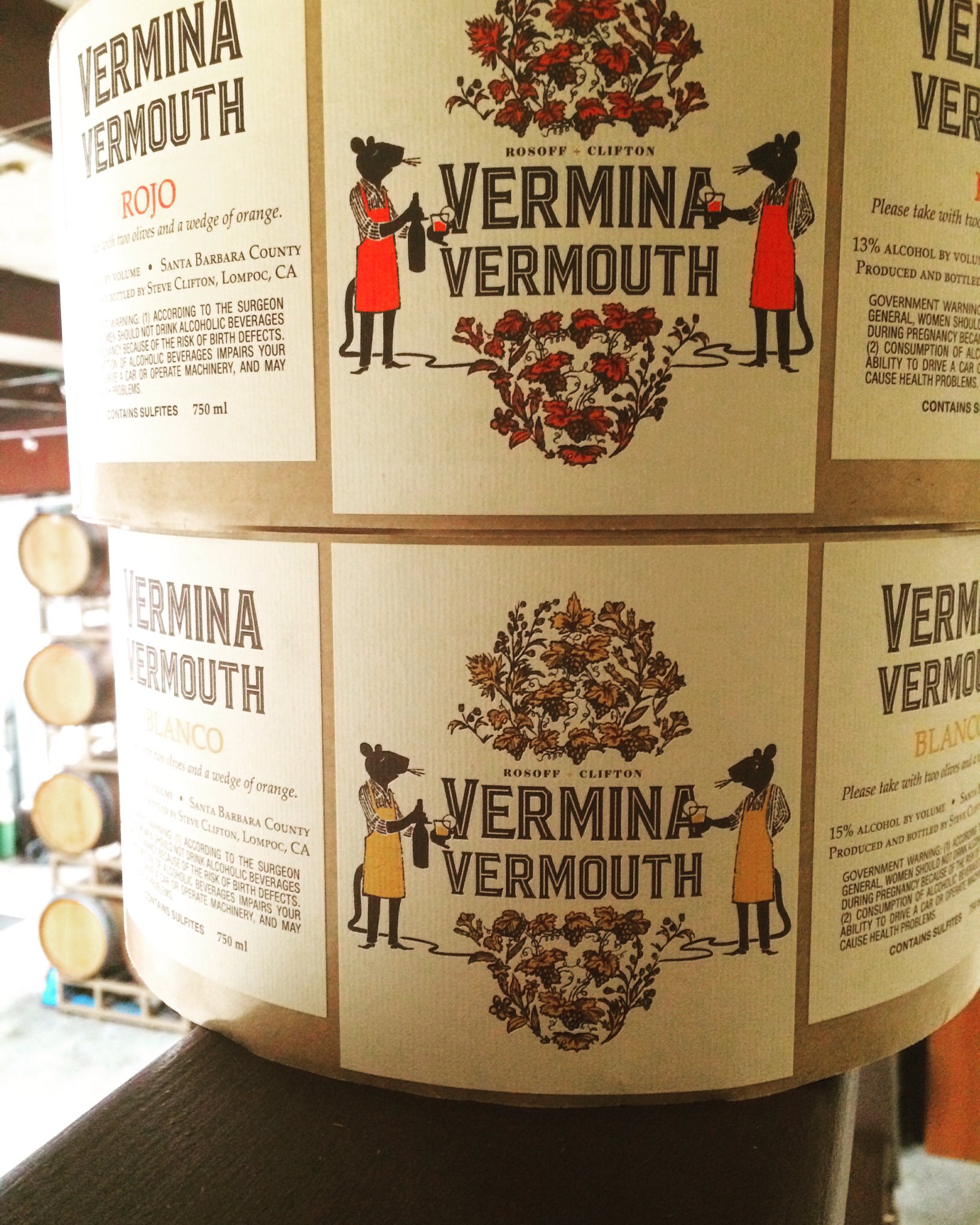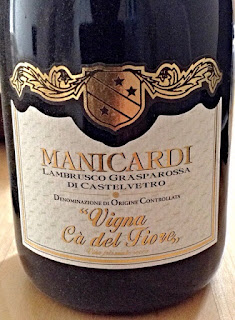Italian wine producer Tenuta San Guido came to Southern California recently, to Torrance, in fact. It was a great opportunity to reacquaint myself with the winery's tasty offerings and to discover a wonderful Italian restaurant in a neighborhood that is a little off the beaten path.
Primo Italia's wine is looked over by sommelier
Grace Giovannetti - her husband
Lou owns the place. Their restaurant is only about eight months old, but is already a big hit with the locals, as the dining room was packed and the wine dinner was sold out. Rat-pack music is piped into the front room, while the wine event is held in a private back room by the wine cellar.
The five-course Tuscan-style dinner from
Chef Michelangelo Aliaga featured food that was farm fresh, homemade and wood-fired. Chef Aliaga said, "Tuscany is a rustic, hunting area and these dishes are authentic." He served Florentine-style tripe, fish pancotto and pici pasta with hare ragu. The latter was two days cooked, with red wine. Venison with fruits of the forest was followed by grandmother's cake, "Torta Della Nonna."
Tenuta San Guido is in the Bolgheri region of Tuscany, and they specialize in the so-called "Super Tuscan" style of wine which utilizes Bordeaux grape varieties, grown in Tuscany. The
Marchese Mario Incisa was introduced to the wines of one particular vineyard near Pisa in the 1920s. He strove to create his own "thoroughbred" wine and used cuttings from that special place. It marked the birth of the Super Tuscan style.What the marchese called the "Nose of Bordeaux" comes from the gravelly soil in the area. He produced wines for two decades that didn’t leave the property. They were for private consumption only.
Here's what we drank:
Salviano Orvieto 2015 - A pale gold wine from Umbria, the nose displays minerals, citrus and I swear I got seashore notes in this landlocked Italian white. Great acidity in the mouth, with lemon zest. It was wonderful with tripe and bread, although the acidity fought a bit with the spicy tripe. Grapes include Trebbiano, Grechetto, Chardonnay and Sauvignon Blanc.
Le Difese 2014 - 70% Cabernet Sauvignon and 30% Sangiovese here. The nose shows roses, cassis and minerals, with a palate of black fruit, licorice and earth. Lovely acidity and tannins. It went well enough with the seafood stew, but I preferred the white.
Guidalberto 2015 - 45% Cabernet Sauvignon, 45% Merlot and 10% Sangiovese grapes. Big red fruit, sage and eucalyptus aromas meet flavors of red fruit and soft tannins with an herbal note and finish. It was a great pair with the pici pasta.
Sassicaia 2013 - 85% Cabernet Sauvignon and 15% Cabernet Franc grapes. Red fruit and minerals on the nose are joined by a bit of herbal note, white pepper and cedar aromas. The palate is smooth and rich, with savory minerals, quite elegant. It was remarked on by several around me at the table that it was hard to believe the wine was only four years old. Perfect with the venison. By the way, Sassicaia has its own appellation, Bolgheri Sassicaia D.O.C.
Follow Randy Fuller on Twitter









